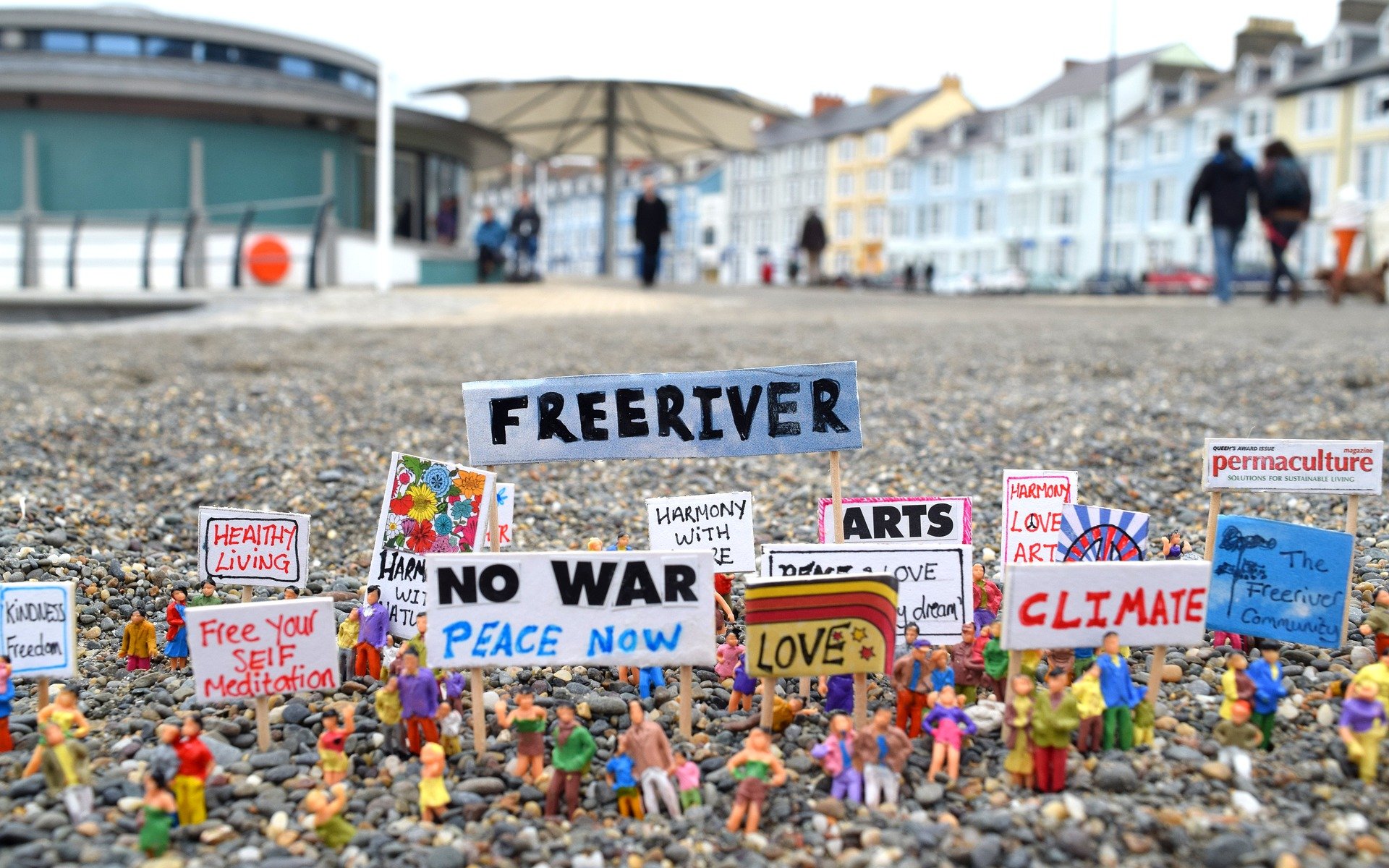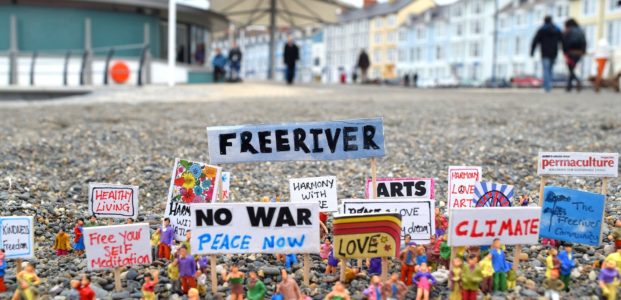SUMMARY
An article reviewing three recent case decisions dealing with the justiciability of climate litigation (justiciability is concerned with determining whether or not a legal action is something that the courts are equipped to deal with).
Litigating Greenhouse Gas Policy in Canada and the Limits of Justiciability: Misdzi Yikh, La Rose, and Mathur
Introduction
2020 produced three new climate change litigation cases in which the adequacy of existing government action and policy for meeting greenhouse gas emission (“GHG”) targets has been placed before the courts. Each of these cases addresses the challenging question of whether or not government action, or rather inaction, and policy in relation to GHG emissions should be addressed by the courts (i.e. whether it gives rise to justiciable issues, meaning those that can be resolved as legal issues by the courts). The Misdzi Yikh (2020 FC 1059) and La Rose (2020 FC 1008) cases were argued in Federal Court in relation to federal actions and inaction over greenhouse gas emissions, while the Mathur (2020 ONSC 6918) case was argued in an Ontario superior court as it focuses on the actions and inaction of the Ontario government.
The purpose of this discussion is to highlight the commonalities and differences in how the concept of justiciability was addressed in each case since this has been critical to whether or not the cases are able to proceed to trial. As will be explained, there appears to be space within Canadian law for this type of climate change litigation, but only so long as claims are specific enough to be treated as justiciable by the courts.
Summary of Misdzi Yikh
The Federal Court’s decision in Misdzi Yikh relates to Canada’s attempt to strike the Statement of Claim initiating this lawsuit. This lawsuit was initiated by two Wet’suwet’en hereditary chiefs (Dini Ze’), Lho’imggin and Smogilhgim, who represent their respective Wet’suwet’En House groups (Yikh) within the Likhts’amisyu (Fireweed) Clan—namely, the Misdzi Yikh (Owl House) and Sa Yikh (Sun House).1
The Dini Ze’ assert that the Government of Canada has failed to enact legislation, create policies and take other actions sufficient to meet its commitment made in the Paris Agreement to keep mean global warming below 2˚C above pre-industrial levels. They state that Canada’s “failure to enact stringent legislation to reduce greenhouse gas emissions is contrary to common law principles of: ‘public trust’, ‘equitable waste’, and the ‘constitutional principle of intergenerational equity’,”2 and that this violates their constitutional rights under sections 7 and 15 of the Charter.3 They also make the novel claim that Canada has breached a duty under section 91 of the Constitution Act, 1867 “by not ensuring low GHG emissions under the peace, order and good government [POGG] powers”.4
The remedies sought by the Dini Ze include various “declaratory, mandatory and supervisory orders” to ensure Canada fulfills its commitments under the Paris Agreement.5
What is Justiciability
Justiciability is a complex legal issue that arises when courts are asked to determine whether some questions are better left to legislative bodies or other decision-makers.6 In other words, the law of justiciability deals with whether a particular lawsuit addresses “a subject matter that is appropriate for a court to decide.”7 The separation of powers requires that certain questions, especially questions of public policy, should be left to the executive branches to determine, and that law making should generally be left up to the legislature.8
While policy issues are generally best left to the executive and legislative branches to resolve, if lawsuits challenging government policy have “sufficient legal elements” then it could still be appropriate for the courts to resolve them. In the Misdzi Yikh decision, Justice McVeigh noted that “[b]lurring of these lines happens sometimes, and a court will intervene especially when the allegations are of the constitutionality of policy or law, or a breach of someone’s constitutional rights.”9
The Question of Justiciability in Misdzi Yikh
While the lawsuit filed by the Dini Ze’ is broadly scoped and clearly targets federal policy, they have raised a number of constitutional arguments as the legal foothold for their challenge to Canada’s law and policies for reducing GHG emissions.10
First, they challenge federal laws passed by Parliament under section 91 of the Constitution Act, 1867 on the basis that these breach Canada’s POGG powers “because they did not allow for the environmental protection that would satisfy Canada’s obligations under the Paris Agreement” and they have “permitted GHG permitting industry through legislation”.11 Justice McVeigh viewed this argument as essentially asking the Court to enact certain laws and on this basis she concluded that it is not justiciable since law making falls to the legislative branch of government rather than the judicial branch.12
The other constitutional arguments of the Dini Ze’ pertain to sections 7 and 15 of the Charter, which Justice McVeigh considered together.13 She agreed with the Government of Canada’s argument that these arguments were not justiciable either as they were:
“broad and diffuse” claims that encompass environmental assessment legislation… the approvals of natural resource projects that were subjected to federal and/or provincial review, and international agreements and domestic policy relating to climate change.14
As the Charter arguments of the Dini Ze’ are not directed at any specific laws, Justice McVeigh found it “difficult to find sufficient legal elements in the Charter claims for them to be justiciable.”15 Remember that a court may only resolve a policy question if it has sufficient legal elements to it. She noted that the analysis for determining whether a constitutional violation can be justified (known as the Oakes test under section 1 of the Charter) could not be done without a clearly impugned law or state action to analyze, which this claim lacks.16
Finally, Justice McVeigh concluded that the remedies sought by Dini Ze’ were non-justiciable as well. The Federal Court was asked to make a number of declarations regarding the Government of Canada’s legal obligations in relation to targets for reducing GHG emissions, order Canada to amend all its environmental assessment statutes to conform to these obligations, and order Canada to engage in annual accounting for its cumulative GHG emission, and the Federal Court was also asked to retain jurisdiction over this matter until Canada complies with these other remedies.17 Justice McVeigh found these matters were too broad and lacking in legality for court ordered remedies, describing them as “solutions that are appropriate to be executed by other branches of government”.18 She concluded that climate change policy should not be addressed through the judicial system because “while undoubtedly important, [it] is inherently political, not legal, and is of the realm of the executive and legislative branches of government”. 19
Comparing Misdzi Yikh to Other Analogous Cases: LaRose and Mathur
In parallel with Misdzi Yikh, the recent decisions in LaRose v Canada20 and Mathur v Ontario21, also address challenges to governments’ failure to enact adequate legislation and policy in response to their greenhouse gas emission targets. The courts in these cases were also tasked with addressing whether these claims can be justiciable.
In LaRose, Justice Manson determined that similar constitutional arguments initiated by youths under sections 7 and 15 of the Charter claims were not justiciable; however, he did find that an argument based on the common law’s public trust doctrine was justiciable.22 Similar to Justice McVeigh’s conclusions in Misdzi Yikh, Justice Manson found that the Charter arguments of youths challenging the sufficiency of federal action to address climate change were not justiciable because they were seeking relief that is beyond the appropriate role for the courts and instead should be addressed by other branches of government.23
Unlike the Dini Ze’ in Misdzi Yikh, the group of youths who initiated the La Rose lawsuit make an argument based on the public trust doctrine which Justice Manson accepted as a justiciable claim. Essentially, they have asked the Federal Court to “recognize the existence of a sui generis doctrine, in which the Defendants have obligation to protect and preserve various identified inherently public resources” under federal jurisdiction.24 While Justice Manson ultimately determined that this aspect of their claim will fail because it is not a reasonable cause of action, he at least accepted that it was a justiciable issue for the courts to resolve.25
In Mathur, Justice Brown was also tasked with determining whether a lawsuit based on the inadequacy of a government’s response to climate change was justiciable.26 In this case another group of youths argued their lawsuit was justiciable because it is “aimed at a number of very specific measures”, making it distinguishable from the broadly framed lawsuits in Misdzi Yikh and La Rose.27 Justice Brown agreed, comparing the facts in Mathur to those in LaRose to conclude that this lawsuit should be allowed to proceed to trial as it challenges a specific set of laws and actions, unlike the more wide-ranging claims in La Rose.28
Not only did Justice Brown conclude that the Charter arguments in Mathur were justiciable, she also concluded that the youths in this case have a reasonable cause of action and she dismissed Ontario’s attempt to stop this matter from proceeding to trial.
Comment on Climate Change Litigation Future in Canada
While further input will likely come from the Courts of Appeal in these cases, the initial decisions in Misdzi Yikh, La Rose, and Mathur already provide helpful guidance for climate change litigation in Canada. Specifically, they indicate that greenhouse gas policy can be a suitable subject matter for the courts to resolve so long as lawsuits challenge specific legislation or government actions rather than attempting to address these issues at the policy level. While the plaintiffs in Misdzi Yikh and La Rose failed to convince the courts that their claims were justiciable, the result in Mathur indicates that there is room for such litigation in Canada.
- Misdzi Yikh v Canada, 2020 FC 1059 [Misdzi Yikh].
- Ibid at para 4
- Ibid.
- Ibid at para 5.
- Ibid at para 6.
- Highwood Congregation of Jehovah’s Witnesses (Judicial Committee) v Wall, 2018 SCC 26 at para 33 [Highwood].
- Misdzi Yikh, supra note 1 at para 17.
- Ibid at para 19.
- Ibid at para 20.
- Ibid at para 25.
- Ibid at para 43.
- Ibid at para 47.
- Ibid at paras 48–49.
- Ibid at para 54.
- Ibid at para 55.
- Ibid.
- Ibid at paras 15, 71–72.
- Ibid at para 73.
- Ibid at para 77.
- La Rose v Canada, 2020 FC 1008 [La Rose].
- Mathur v Ontario, 2020 ONSC 6918 [Mathur].
- La Rose, supra note 19 at para 26.
- Ibid at paras 41, 50.
- Ibid at para 57.
- Ibid at paras 58–59.
- Mathur, supra note 20 at para 43.
- Ibid at para 119.
- Ibid at paras 139–140.


